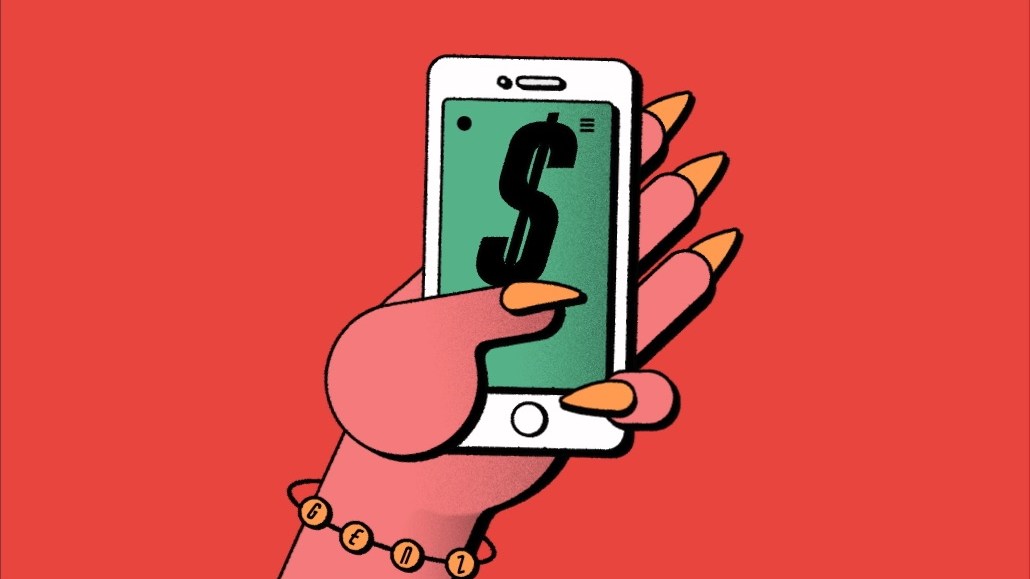Register by Jan 13 to save on passes and connect with marketers from Uber, Bose and more
Research Briefing: Gen Z gets breaking news first through social media like TikTok

This research is based on unique data collected from our proprietary audience of publisher, agency, brand and tech insiders. It’s available to Digiday+ members. More from the series →
Interested in sharing your perspectives on the media and marketing industries? Join the Digiday research panel.
In this week’s Digiday+ Research Briefing, we examine how Gen Z consumes the news, how agencies expect revenues and ad spending to rebound in 2024, and how advertisers are sticking with X at least through the Super Bowl, as seen in recent data from Digiday+ Research.
32% of U.S. adults under 30 access news via TikTok
Gen Zers have spent their entire lives with access to a digital world and they nearly exclusively discover breaking news on their smartphones while scrolling through social apps like Instagram or X. This is according to Digiday+ Research’s guide to emerging trends in Gen Z news consumption, which appears in Digiday’s newly published 2024 Notebook.
TikTok, in particular, has been capturing Gen Z’s attention as a news source. The percentage of U.S. adults ages 18 to 29 who said they regularly access news via TikTok rose to 32% in 2023 from 26% the year before, according to a study by the Pew Research Center. Meanwhile, only 15% of those ages 30 to 49, 7% of those 50 to 64 and 3% of those 65 and older said the same.
News publishers have taken note of Gen Z’s news consumption habits and are chasing this audience across social media, especially on TikTok. CBS News, for example, has embraced TikTok’s green screen format that allows a reporter to talk in front of supporting images and videos in order to engage viewers visually while they’re relaying facts.
Insights and stats:
- “We can create videos with our anchors and correspondents functioning in that role. They can walk [viewers] through the video and break [content] down in a way that feels authentic. That’s just creator content in a very smart, high standards way of doing it.” — Christina Capatides, vp of social media and trending content for CBS News
- TikTok’s focus on user-generated content (UGC) is a main factor driving its popularity among Gen Z. This is likely due to a general consensus among Gen Zers that independent creators feel more trustworthy than larger organizations, which they believe could proliferate misleading or biased information.
- However, platforms like TikTok that provide forums for UGC face brand safety concerns. Thirty-five percent of marketers said that brand safety concerns are their biggest challenge on TikTok, according to Digiday+ Research’s CMO Strategies series.
Read more about how Gen Z consumes the news
Digiday+ Research digest
Agencies expect advertisers’ ad spending and their own revenues to grow in 2024. That’s according to Digiday+ Research’s late-fourth quarter survey of agency professionals. Sixty-one percent of agency pros said they agree advertisers will spend more in 2024, up from 39% the year prior, but still down from 76% two years ago. This signifies a shift to agencies’ attitudes regarding ad spend. But when it comes to revenues, agency pros see a real rebound ahead.
The stats:
- Eighty-seven percent of agencies said at the end of 2023 that they expect their 2024 revenues to be higher than last year. That’s up from 68% who said the same of 2023.
- Agencies’ optimism is higher for individual agencies than for the agency business as a whole. Seventy-four percent of agency pros said they agreed that they’re optimistic about their companies’ prospects for 2024, but only 52% of agency pros said they agreed that they’re optimistic about the prospects for the agency business this year.
- Although agencies’ revenues took a dip in 2023, agencies felt they actually had a successful year. Nearly two-thirds of agency pros (65%) agreed their companies had a successful 2023, while only 26% disagreed.
Read more about agencies’ expectations for 2024
Despite brand safety concerns, X (formerly Twitter) is expected to remain marketers’ go-to social media platform to amplify marketing messages during the Super Bowl. That’s not to say that X will be at the center of Super Bowl campaigns this year, but no alternative has come to take its place as the reigning second screen. What all of this likely comes down to is that, following its change in leadership and its change in identity, brands and retailers no longer see X as a platform that is as appropriate for their brands as it once was.
Insights and stats:
- “It’s still this primary second screen just because nothing matches it for scale of real-time conversation during live events — sports, especially. But it’s harder for brands to be active there because it’s uncertain and riskier.” — Matt Talbot, co-founder and chief creative officer at WorkInProgress ad agency
- Thirty-five percent of marketer respondents said that brand safety concerns are the biggest challenge they face on X, according to Digiday+ Research’s CMO Strategies series.
- Forty-four percent of brand and retailer pros said in 2023 that X is not appropriate at all or not very appropriate for their brands, compared with just 10% in 2022, according to Digiday+ Research surveys.
Read more about brands’ and retailers’ use of X
See research from all Digiday Media Brands:
More in Media

Why publishers are building their own creator networks
Publishers are forming creator networks to regain control, combat traffic declines, and reach audiences shifting toward influencers.

The accidental guardian: How Cloudflare’s Matthew Prince became publishing’s unexpected defender
Cloudflare’s day job is fending off botnets and nation-state cyberattacks, not debating how Google and other AI firms crawl publisher sites.

A timeline of the major deals between publishers and AI tech companies in 2025
Here’s a list of all the major deals signed between publishers and AI tech companies in 2025.








